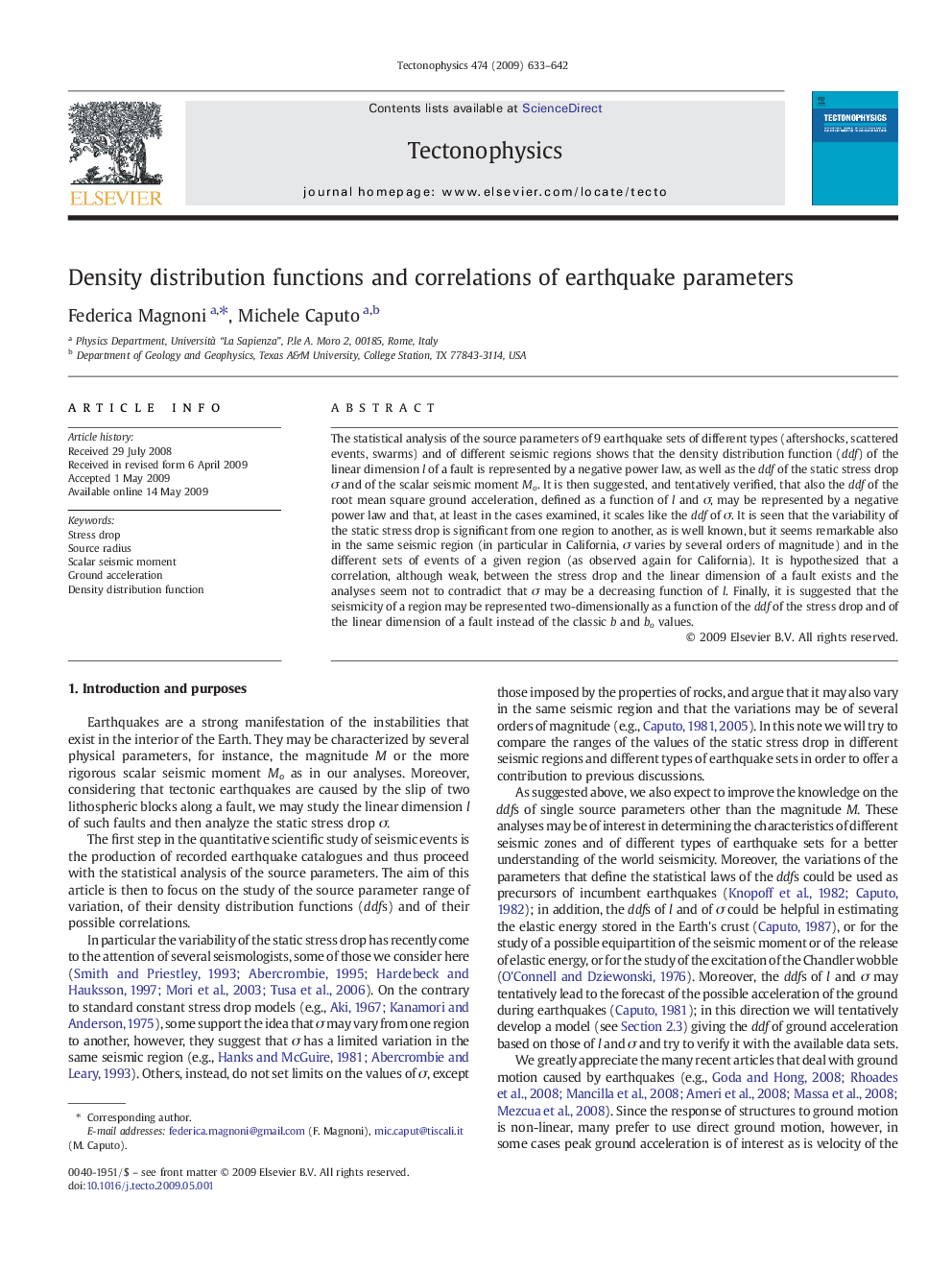| Article ID | Journal | Published Year | Pages | File Type |
|---|---|---|---|---|
| 4694084 | Tectonophysics | 2009 | 10 Pages |
The statistical analysis of the source parameters of 9 earthquake sets of different types (aftershocks, scattered events, swarms) and of different seismic regions shows that the density distribution function (ddf) of the linear dimension l of a fault is represented by a negative power law, as well as the ddf of the static stress drop σ and of the scalar seismic moment Mo. It is then suggested, and tentatively verified, that also the ddf of the root mean square ground acceleration, defined as a function of l and σ, may be represented by a negative power law and that, at least in the cases examined, it scales like the ddf of σ. It is seen that the variability of the static stress drop is significant from one region to another, as is well known, but it seems remarkable also in the same seismic region (in particular in California, σ varies by several orders of magnitude) and in the different sets of events of a given region (as observed again for California). It is hypothesized that a correlation, although weak, between the stress drop and the linear dimension of a fault exists and the analyses seem not to contradict that σ may be a decreasing function of l. Finally, it is suggested that the seismicity of a region may be represented two-dimensionally as a function of the ddf of the stress drop and of the linear dimension of a fault instead of the classic b and bo values.
